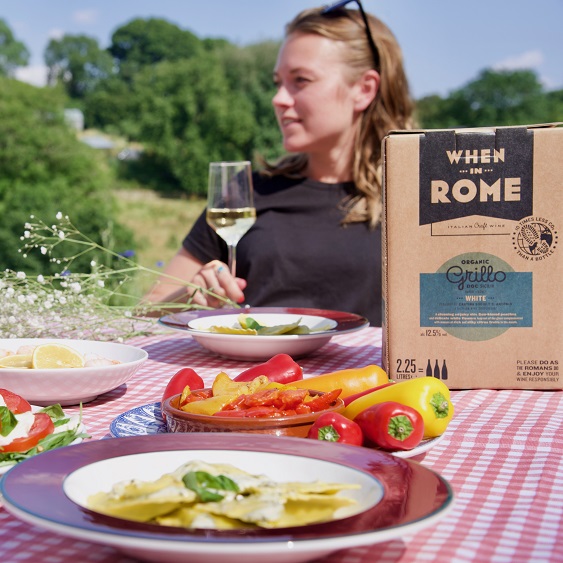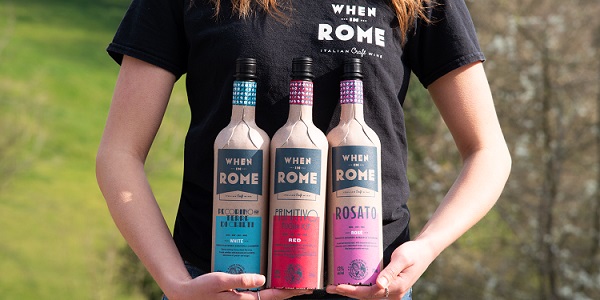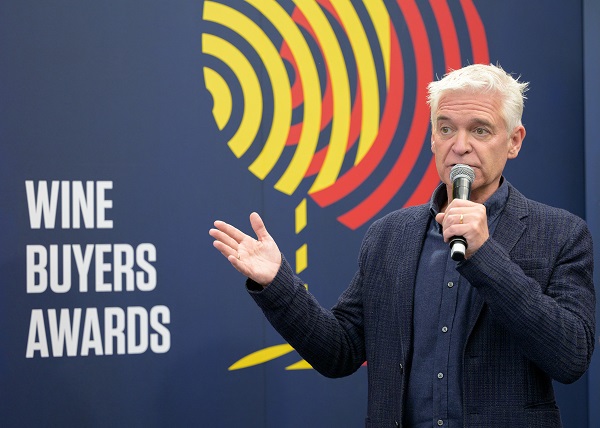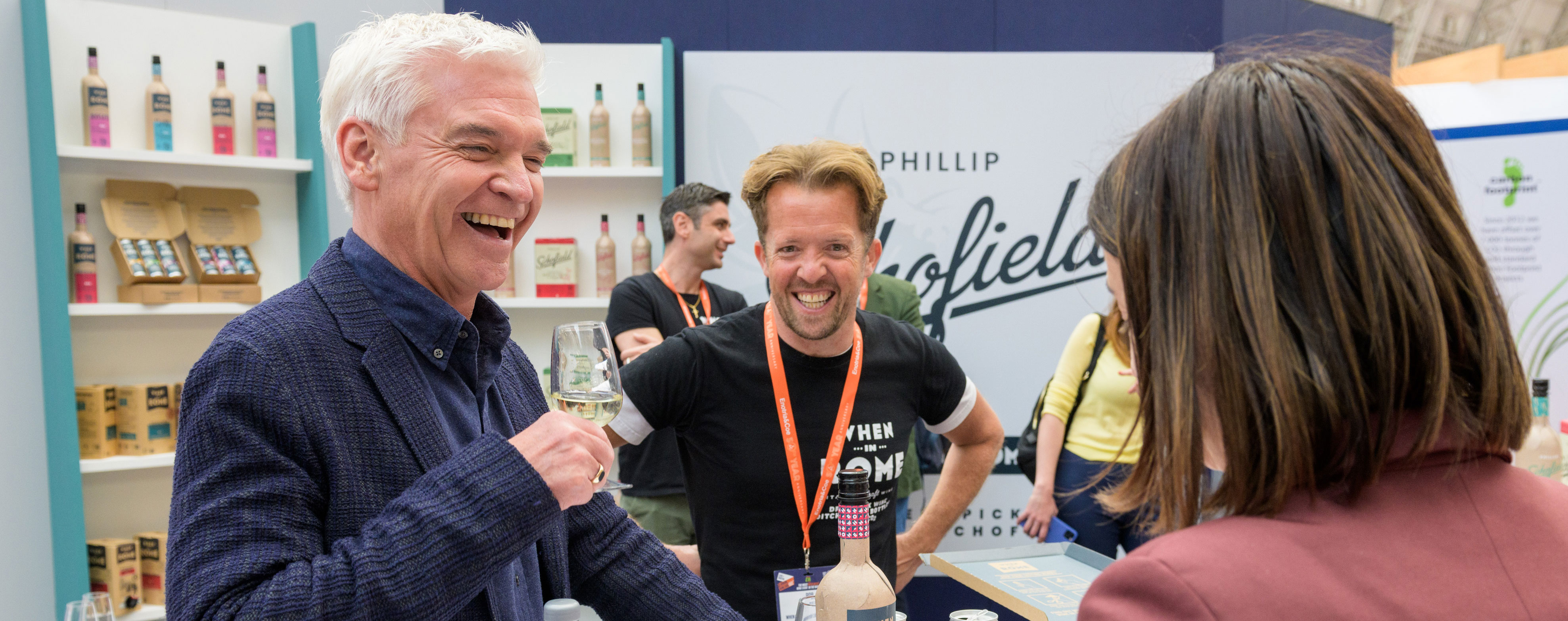While not considered a major contributor to increasing CO2 emissions – for some context, civil aviation is responsible for 22m tonnes of CO2 equivalent – it remains a significant source.
Much of the industry’s footprint comes from packaging. In wine, 39% of all emissions come from the manufacture and transport of glass. Reimaging glass packaging, therefore, sounds like an easy win for wine brands and producers to reduce their carbon footprint.
British start-up When in Rome, which imports Italian craft wine for UK consumers, sees the potential. Through trial and error, the challenger brand has investigated what consumers want and don’t want in innovative packaging.

Bag-in-box yields ‘massive’ reduction in carbon emissions
When in Rome shunned glass bottles from the get-go. “Our mission is to eradicate [glass bottles] from the wine industry,” Rob Malin, CEO of When in Rome, told delegates at the recent Future Summit hosted by start-up network Bread & Jam.As a result, most of When in Rome’s wine is sold to UK consumers in a 2.25L bag-in-box format (above). The packaging (excluding the tap) is 100% recyclable, and produces 10 times fewer carbon emissions than the average wine bottle.
The start-up transports all its product from Italy to the UK via train to cut back on airmiles and associated emissions.
Through a partnership with Carbon Cloud, When in Rome is now adding carbon labels to its products. An analysis of its bag-in-box Sauvignon, scoping a lifecycle assessment (LCA) of the wine, reveals the 2.25L format yields a climate footprint of 0.69kg CO2e/kg. This score is a ‘massive’ reduction of 41% in carbon production compared to the same wine packaged in a single-use glass bottle, which is responsible for 1.18kg CO2e/kg, according to the start-up.
Challenges facing alt packaging for wine
One challenge facing the start-up is reduced demand for rosé wine in the bag-in-box format. “Only about 5% of our wine is rosé,” Malin told delegates, “which is completely different for other wine companies.“All throughout the summer we sell a very small amount of rosé and that’s because people buy it on sight.”
Malin suggested that consumers in the UK tend to opt for pale rosés. This means that they want to see the colour of the wine before purchasing it, which is something that a bag-in-box format cannot deliver.
A potential solution to this problem may have lay in the flat plastic bottle format When in Rome brought to market. Being plastic, the colour of the wine would be visible to the consumer. The idea was that a flat bottle could be purchased online and delivered via Royal Mail through the letterbox.
It was a “fabulous piece of packaging”, Malin recalled. “But we really struggled to get sales traction with it. It was just one step too far in terms of people’s perceptions of ‘what wine should be sold in’.” When in Rome removed it from the market.
As suggested by the plastic bottle experiment, no matter how much more eco-friendly a product and its packaging may be, it will only make a positive impact if the consumer accepts it.
Bag-in-box wine is a ‘very’ popular format in ‘a lot’ of countries, explained Malin. “It accounts for about 65% of the wine sold in Sweden, 40% in France, and 3% in the UK.”
Given that 97% of wine sold in the UK is in glass bottles, When in Rome is working to grow the bag-in-box category on home soil. In the meantime, the company is investigating exactly why consumers may be more reluctant to move to more sustainable packaging alternatives.
One reason could be price point, suggested Malin at the Bread & Jam event. A 2.25L bag-in-box format contains three bottles-worth of wine, making it understandably more expensive than single 750ml bottles on-shelf.
In order to compete with the mainstream wine industry, When in Rome has added a paper wine bottle to its existing bag-in-box and canned wine formats.
The paper bottle – made from 94% recycled paper – is the result of a collaboration between When in Rome and British sustainable packaging company Frugalpac.
It is essentially a bag in the shape of a bottle, Malin explained. The format has already been listed by online retailer Ocado and, so far, consumer reaction has been ‘completely different’ to that observed by When in Rome’s plastic bottle.

Paper bottle unwrapped
How does the paper bottle compare to the sustainability credentials of When in Rome’s bag-in-box products? It doesn’t score quite as well, revealed the start-up’s CEO. “It has a higher carbon footprint and [due to the partnership with Carbon Cloud], the value is on the packaging.”One reason for this is logistics. The paper bottles are made at Frugalpac’s facility in Ipswich, then transported to Italy, where they are filled with wine at Cantina Goccia, before being returned to the UK for sale. Admitting it’s a ‘suboptimal’ supply chain, Malin also stressed the responsibility that brands have to continually improve their processes.
“Once you publish [the footprint], you have to start reducing it over time,” he says.
While it may be more carbon intensive than the bag-in-box format, the new packaging is significantly less intensive than the classic alternative. The paper bottle has a carbon footprint 84% lower than a single-use glass bottle. It comprises an external layer of 94% recycled paper, with a PET plastic inner.
Frugalpac has recently sold its first paper bottle assembly machine, FBAM-1, to a Canadian packaging firm, KinsBrae Packaging, and is in talks with contract packing and packaging companies around the globe. So this should significantly reduce its carbon footprint in the future.

UK television presenter Phillip Schofield (above), who has a range of Italian bag-in-box wines, is preparing to launch the range in cardboard bottles, he revealed at the recent London Wine Fair.
This article was previously published by our sister newsletters BeverageDaily and FoodNavigator.













.png)






